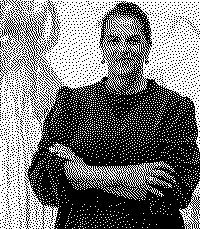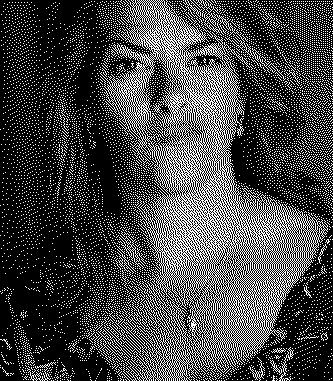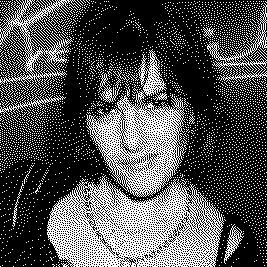Artists/Tracey Emin
Fast Facts
Association with the Young British Artists
Emin is part of the Young British Artists (YBAs), a group that rose to fame in the late 1980s and 1990s. The YBAs were known for their shock tactics, use of unconventional materials, and exploration of taboo subjects.
Range of Media
Emin works in a wide range of media, including drawing, painting, sculpture, film, photography, neon text, and sewn appliqué.
Autobiographical and Confessional Art
Much of her art is autobiographical, with a confessional nature. She explores personal experiences, relationships, and her own body in her work, often addressing themes of love, loss, and sexuality.
Controversy and Acclaim
Emin's work has often been at the center of public debate and controversy, particularly for its explicit content and exploration of personal and sexual subject matter. Despite this, she has received significant critical acclaim and is considered one of the leading figures in contemporary art.
Biography



Tracey Emin, a prominent figure in contemporary British art, was born on July 3, 1963, in Croydon, South London. Of English mother of Romanichal descent and a Turkish Cypriot father, she grew up in Margate, Kent, with her twin brother, Paul. Emin's early life in Margate and her experiences, including being raped at 13, profoundly influenced her art, often exploring themes of adolescence, childhood abuse, and sexual assault (Wikipedia).
Emin embarked on her artistic journey at Medway College of Design, studying fashion from 1980 to 1982, where she met Billy Childish and became associated with The Medway Poets. Her educational path continued at Maidstone Art College, where she pursued printmaking and graduated with a first-class degree. Emin's move to London for an MA in painting at the Royal College of Art marked a crucial turning point in her career. This period was emotionally turbulent for Emin, leading her to destroy all her graduate school art, a phase she later described as "emotional suicide" (Wikipedia).
In the early 1990s, Emin's professional career began to gain traction. Her first solo show at White Cube in London and her collaborative venture "The Shop" with Sarah Lucas were pivotal in her career. Emin's work is deeply personal, utilizing a variety of mediums including drawing, painting, sculpture, film, photography, neon text, and sewn appliqué (Wikipedia).
Emin's prominence in the art world was solidified in the late 1990s with "My Bed," exhibited at the Tate Gallery as part of her Turner Prize nomination in 1999. The piece featured her unmade bed and floor littered with personal items, providing a raw, unfiltered glimpse into her life and emotional state after a breakup. The work ignited debate over its artistic merit and the role of autobiographical elements in art (Wikipedia) (The Art Story).
Throughout her career, Emin has explored themes of love, loss, and identity, challenging the boundaries between 'fine art' and 'craft' through her incorporation of traditional techniques like embroidery and appliqué. Her contributions extend beyond her artwork; she has been a vocal advocate for the integration of creativity and autobiography in art. In 2011, Emin was appointed Professor of Drawing at the Royal Academy, marking a historic moment as one of the first female professors since the academy's founding in 1768 (Wikipedia).
Emin's legacy is marked by her provocative and influential works, securing her status as a key figure in contemporary British art. Her ability to push the boundaries of the personal and autobiographical in art continues to inspire dialogue and exploration in the art world (Wikipedia) (The Art Story).
Bodies of Work
-

Monoprint Drawings
-

Neon Artworks
-

Textiles
-

Installations
-

Sculptures
-

Film and Video
-

My Bed
-

Everyone I Have Ever Slept With 1963-1995
1995
-

The Last Thing I Said to You is Don't Leave Me Here
-

Monument Valley (Grand Scale)
1995
-

Exorcism of the Last Painting I Ever Made
-

Terribly Wrong
1997
-

Is Anal Sex Legal/Is Legal Sex Anal?
1998
-

Death Mask
2002
-

The Perfect Place to Grow
2018
-

A Fortnight of Tears
2018
-

Lovers Grave
Importance
Tracey Emin's significance in the contemporary art world is vast and multifaceted, establishing her as a crucial figure for a number of reasons:
Pioneering Role in Confessional Artwork
Emin is renowned for her deeply personal and confessional art style, which has contributed significantly to the acceptance and understanding of autobiographical content in contemporary art. Her work, exemplified by pieces such as "My Bed" and "Everyone I Have Ever Slept With 1963–1995", utilizes personal experiences to explore universal themes of love, loss, and identity, challenging traditional boundaries between public and private life (Wikipedia) (The Art Story).
Expanding the Medium and Methodology of Art
Emin employs a diverse array of media, including needlework, drawing, painting, sculpture, film, and neon text. By integrating traditional craft techniques such as embroidery and appliqué with conventional art forms, Emin challenges the hierarchies within the art world and expands the definition of fine art. Her use of non-traditional materials and methods has influenced the art world's acceptance of varied forms of expression (Wikipedia) (The Art Story).
Feminism and the Exploration of Female Experience
Emin's work is integral to feminist discourse within contemporary art. Through her exploration of themes such as sexuality, abortion, and rape, Emin offers a raw and unfiltered look into the female experience, confronting societal taboos and sparking discussion on issues often considered private or shameful. Her candid and sometimes controversial portrayal of these subjects has contributed to the ongoing conversation about women's rights and the representation of women in art (Wikipedia) (The Art Story).
Influence on Younger Generations of Artists
Emin's success and visibility have paved the way for younger generations of artists, particularly women, to explore autobiographical and confessional themes in their work. She has shown that personal and often painful experiences can be a powerful source of artistic inspiration and that vulnerability can be a strength rather than a weakness. Emin's mentorship and support of emerging artists, through initiatives like the TKE Studios in Margate, highlight her commitment to nurturing new talent (Wikipedia).
Contribution to the Public Dialogue on Art
Emin's work, notably pieces like "My Bed", has ignited public debate on what constitutes art, the value of autobiographical elements, and the role of the artist's intent in the interpretation of art. By provoking discussion and sometimes controversy, Emin has contributed to a broader public engagement with contemporary art, making it more accessible and relatable to a wider audience. Her participation as a lecturer and speaker further underscores her role in shaping the discourse around contemporary art and its societal implications (Wikipedia) (The Art Story).
Technique
Tracey Emin's artistic techniques are as varied and personal as the subjects of her work, reflecting her multifaceted approach to art that merges traditional methods with contemporary themes and personal narratives:
Use of Readymade Objects
Emin's work often incorporates readymade objects to explore personal experiences and emotions. A prime example is "My Bed," an installation that features her actual bed, surrounded by intimate and everyday objects, reflecting a period of emotional turmoil. This technique aligns with the Duchampian concept of the readymade, emphasizing art making through selection and arrangement of objects rather than traditional crafting (The Art Story).
Embroidery and Appliqué
Emin employs traditional crafts like embroidery and appliqué in works such as "To Meet My Past," which features a perfectly made bed adorned with hand-embroidered fabrics. These techniques allow her to weave personal histories and emotional landscapes into the fabric, literally and metaphorically. By incorporating crafts typically considered "feminine," Emin challenges art historical distinctions between fine art and craft, elevating the status of the latter (The Art Story).
Neon Works
In the 2000s, Emin expanded her repertoire to include neon lighting, using her distinctive handwriting to create works like "You Forgot to Kiss my Soul." This technique contrasts the personal touch of handwriting with the industrial feel of neon, creating a unique visual and emotional impact. Emin's neon works are emotionally charged, exploring themes of desire, love, and personal reflection (The Art Story).
Photography
Emin uses photography as a means of self-exploration and expression, as seen in "I've Got It All," a self-portrait that confronts themes of body, success, and the commodification of art. Through photography, Emin engages with the representation of the self, examining the relationship between artist, art, and the economy in a candid and often provocative manner (The Art Story).

